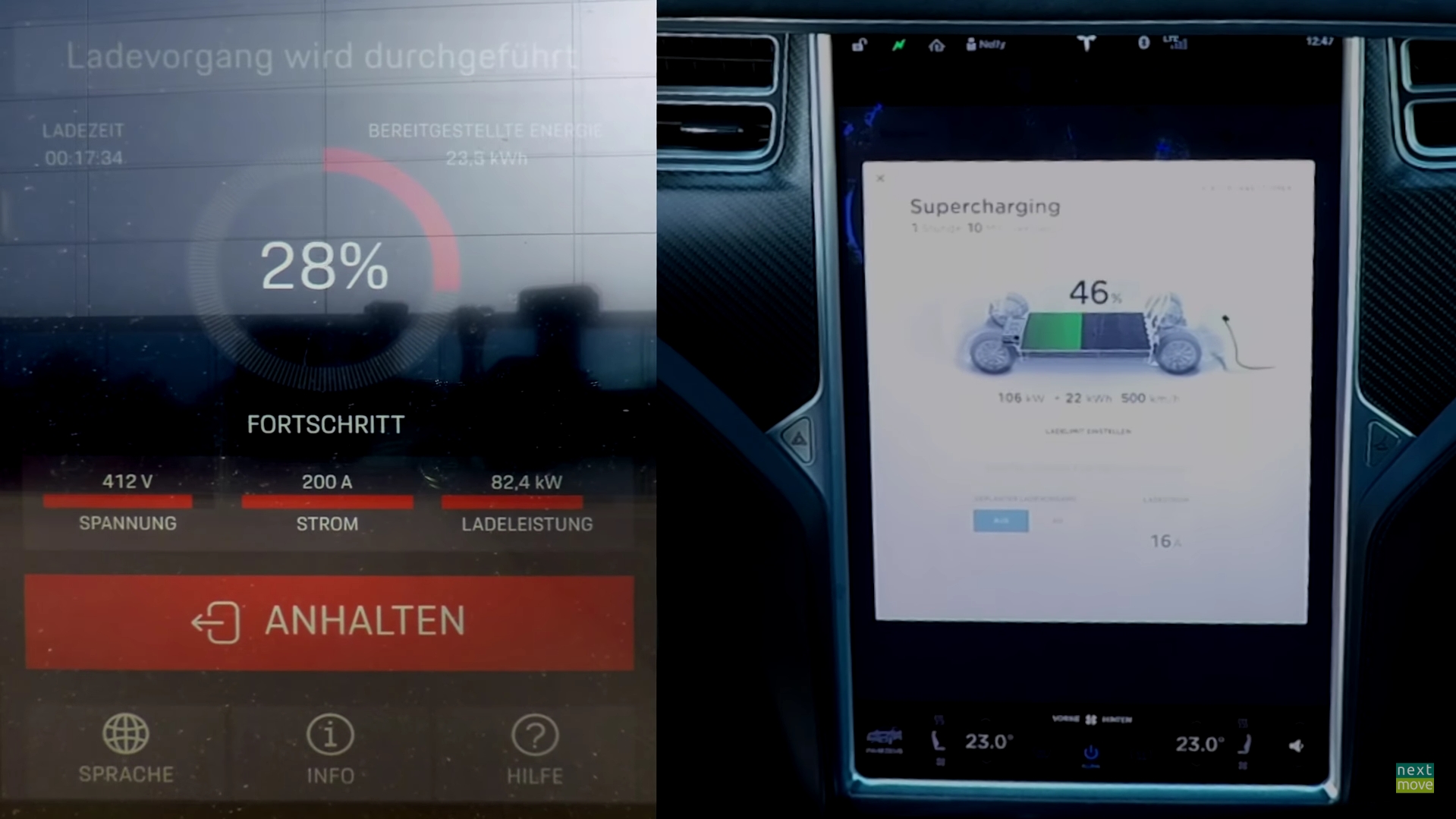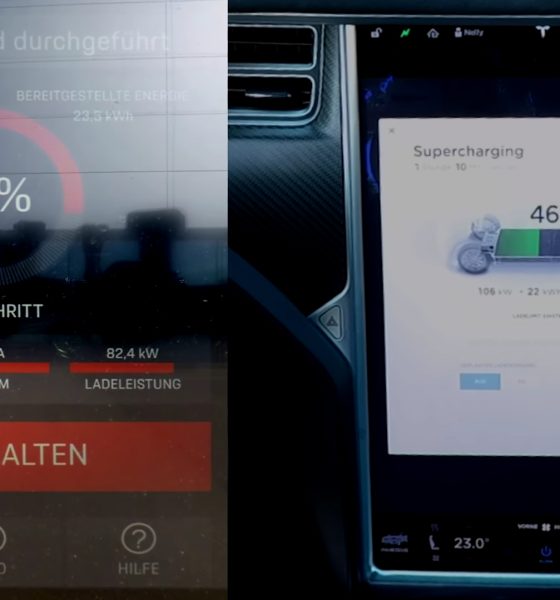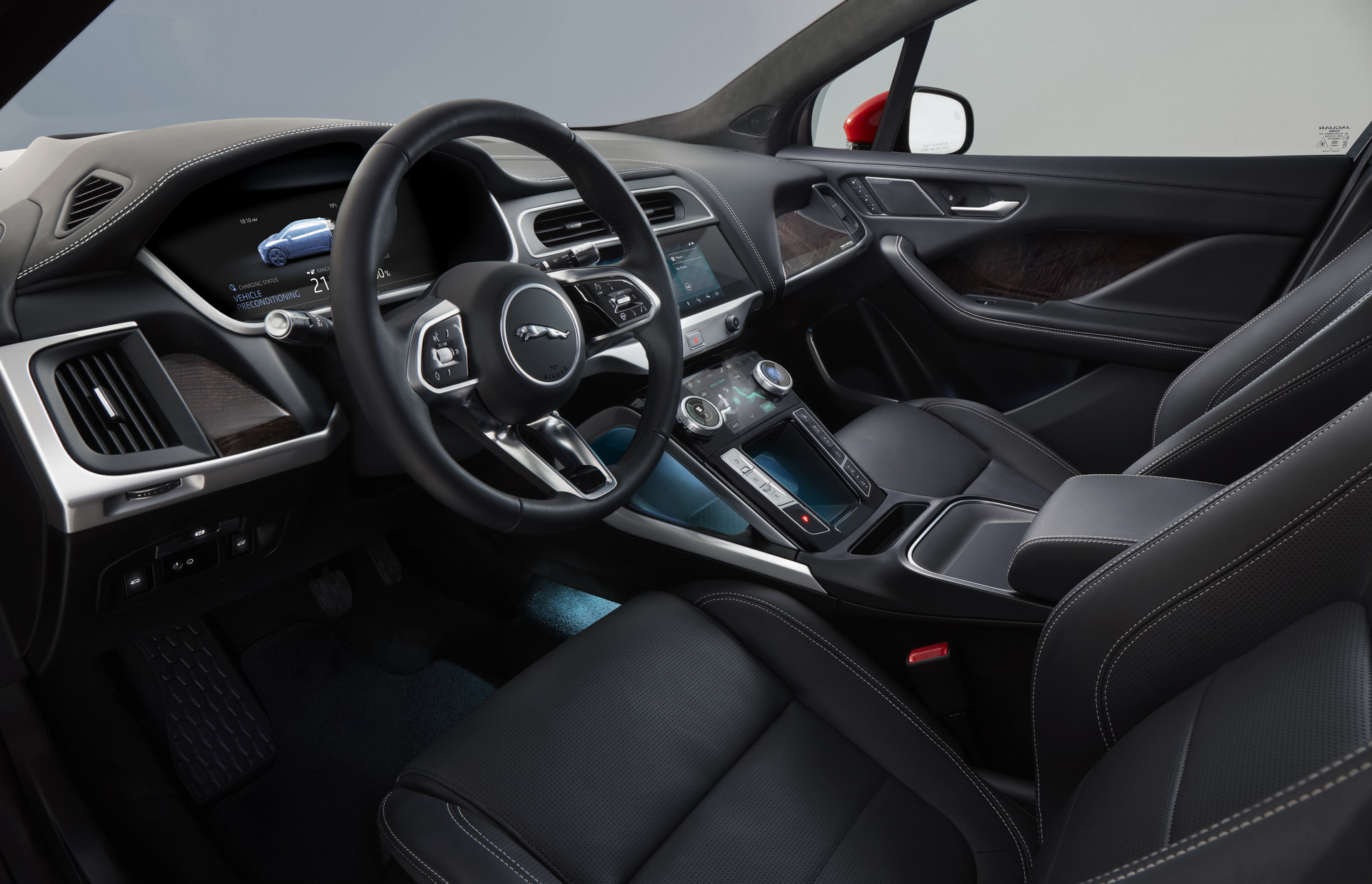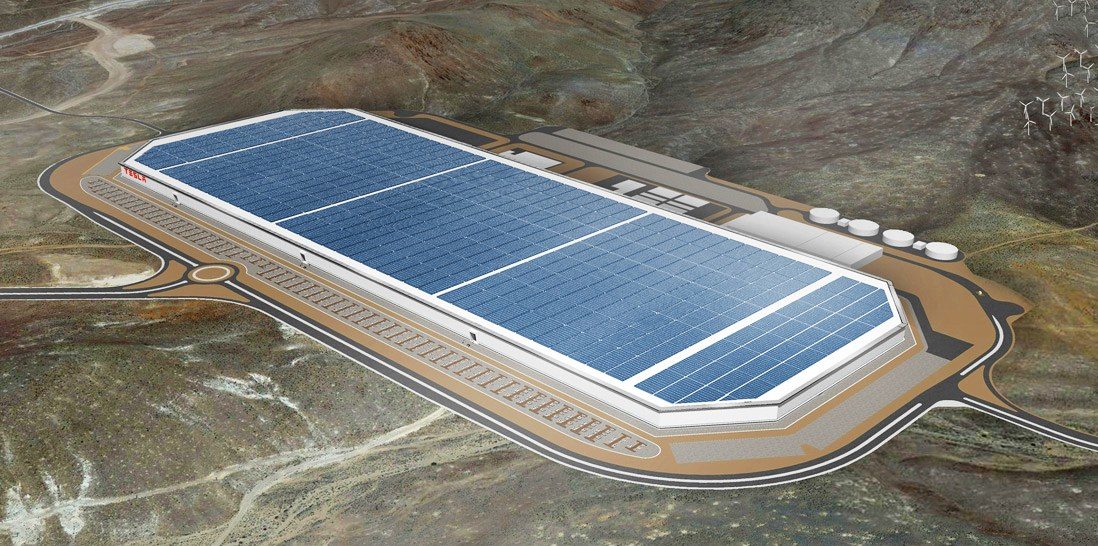

News
Tesla’s edge in battery and charging tech emerges in Model X vs Jaguar I-PACE range test
With just 15 years of experience under its belt, Tesla remains a neophyte in the automotive industry. Despite its short tenure, the upstart electric car maker continues to establish itself as a leader in battery technology and charging infrastructure. Tesla’s advantages in these fields became prominent in a real-world test between the Model X 90D and the Jaguar I-PACE in Germany earlier this month, when the two vehicles went head-to-head in a battery consumption and charging test.
Batteries are a core part of Tesla’s business. Since the days of the original Roadster, Tesla has gone all-in with its battery technology, from the Model S and X’s 18650 cells to the Model 3’s more energy-dense 2170 cells. The same is true for Tesla’s Supercharger Network. The Silicon Valley-based carmaker has invested heavily in the expansion of its charging infrastructure, to the point where the company’s vehicles today are among the few electric cars that are almost as convenient as fossil fuel-powered vehicles for long-distance driving.
The Jaguar I-PACE is an all-electric crossover SUV that boasts plush interior accents and a 90 kWh battery. With its large battery pack, Jaguar estimates that the I-PACE should be able to travel up to 240 miles per charge. The vehicle is also compatible with DC rapid chargers, including the upcoming IONITY Network, which is capable of providing an output of up to 350 kW. As shown by a range and battery consumption test by German YouTube channel nextmove, though, it appears that the I-PACE’s highway consumption and charging speed leaves much to be desired.

The publication opted to drive both vehicles on the Autobahn at highway speeds, traveling from Jena to Berlin (a distance of 268 km/166 miles). With both vehicles having a 90 kWh battery pack, and with the Model X being larger and heavier, it initially seemed like the I-PACE would have no problem keeping pace with the American-made all-electric SUV. Midway through the test, though, it became evident that the Jaguar I-PACE, despite being smaller and lighter, was less efficient than the Model X. At speeds between 93 km/h (58 mph) and 110 km/h (68 mph), for example, the I-PACE showed an average consumption of 22.5 kWh/100 km (362 Wh/mi). The Model X, on the other hand, had a consumption of 17.5 kWh/100 km (282 Wh/mi). That makes the larger, heavier Model X around 23% more efficient than the Jaguar I-PACE.
The Tesla Model X also outshone the Jaguar I-PACE in terms of charging. The German publication opted to charge the I-PACE at an IONITY station in a Porsche dealership. IONITY’s stations are capable of proving up to 350 kW of output, but despite this, the I-PACE was limited to only 80-83 kW. In contrast, Tesla’s Supercharger Network was able to recharge the Model X 90D with more than 100 kW of output.
While Tesla’s superior battery tech and charging system were notable in the Model X versus Jaguar I-PACE test, it should be noted that the Model X in nextmove‘s video was still equipped with Tesla’s legacy 18650 battery cells, which are incredibly reliable but not as energy-dense as the 2170 cells found in the Model 3. Tesla’s 2170 cells have garnered rave reviews from auto veterans such as Sandy Munro, who noted that the batteries are superior to those currently in the market. Tesla will inevitably roll out its 2170 cells to the Model S and Model X, and once it does, legacy carmakers like Jaguar would likely find themselves chasing a moving target. This was mentioned by Tesla CEO Elon Musk in the third quarter earnings call, when he noted that the Model 3 is currently the “most efficient energy per mile electric vehicle out there.”

“We’ve got the best in terms of miles or kilometers per kilowatt hour, and we also have the lowest cost per kilowatt hour. This makes it very difficult for other companies to compete with Tesla because we’re the most efficient car and the lowest-cost batteries. So I do encourage our competitors to really make a huge investment. And we’ve been saying that for a long time. And then they are only in this competitive disadvantage because they didn’t. We try to help them as much as we could, and they didn’t want to take our help.
“They can use our Supercharger network if they can just have an adapter for our — connector or something. We want to be as helpful as possible to the rest of the industry. The fact of the matter is we made the investment in the Gigafactory, and other companies didn’t. And we put a lot of effort into having extremely efficient cars, which are having the most efficient powertrains, and the other companies didn’t. But that’s what has put us in quite a strong competitive position right now.”
Back when Elon Musk outlined his plans for starting Gigafactory 1 as a facility specifically designed to manufacture batteries for Tesla’s electric cars; many were skeptical. In 2014, for example, the MIT Technology Review published an article expressing reservations about the project, arguing that the Gigafactory would be a risky gambit for Tesla since it would be difficult to determine if demand for Tesla’s electric cars would be consistent. The Supercharger Network was largely dismissed by the company’s skeptics as well, with critics stating that once other automakers like GM decide to go all-in on the electric car movement, they would be able to leapfrog Tesla’s charging system. As legacy carmakers are coming to the realization that it is not so easy to build electric cars, and as vehicles like the I-PACE lag behind Tesla’s legacy battery technology in the Model X 90D, it seems like Elon Musk’s “I told you so” moment in the past earnings call was well-justified.
Watch nextmove‘s test of the Model X 90D and the Jaguar I-PACE in the video below.

News
Tesla is not sparing any expense in ensuring the Cybercab is safe
Images shared by the longtime watcher showed 16 Cybercab prototypes parked near Giga Texas’ dedicated crash test facility.

The Tesla Cybercab could very well be the safest taxi on the road when it is released and deployed for public use. This was, at least, hinted at by the intensive safety tests that Tesla seems to be putting the autonomous two-seater through at its Giga Texas crash test facility.
Intensive crash tests
As per recent images from longtime Giga Texas watcher and drone operator Joe Tegtmeyer, Tesla seems to be very busy crash testing Cybercab units. Images shared by the longtime watcher showed 16 Cybercab prototypes parked near Giga Texas’ dedicated crash test facility just before the holidays.
Tegtmeyer’s aerial photos showed the prototypes clustered outside the factory’s testing building. Some uncovered Cybercabs showed notable damage and one even had its airbags engaged. With Cybercab production expected to start in about 130 days, it appears that Tesla is very busy ensuring that its autonomous two-seater ends up becoming the safest taxi on public roads.
Prioritizing safety
With no human driver controls, the Cybercab demands exceptional active and passive safety systems to protect occupants in any scenario. Considering Tesla’s reputation, it is then understandable that the company seems to be sparing no expense in ensuring that the Cybercab is as safe as possible.
Tesla’s focus on safety was recently highlighted when the Cybertruck achieved a Top Safety Pick+ rating from the Insurance Institute for Highway Safety (IIHS). This was a notable victory for the Cybertruck as critics have long claimed that the vehicle will be one of, if not the, most unsafe truck on the road due to its appearance. The vehicle’s Top Safety Pick+ rating, if any, simply proved that Tesla never neglects to make its cars as safe as possible, and that definitely includes the Cybercab.
Elon Musk
Tesla’s Elon Musk gives timeframe for FSD’s release in UAE
Provided that Musk’s timeframe proves accurate, FSD would be able to start saturating the Middle East, starting with the UAE, next year.

Tesla CEO Elon Musk stated on Monday that Full Self-Driving (Supervised) could launch in the United Arab Emirates (UAE) as soon as January 2026.
Provided that Musk’s timeframe proves accurate, FSD would be able to start saturating the Middle East, starting with the UAE, next year.
Musk’s estimate
In a post on X, UAE-based political analyst Ahmed Sharif Al Amiri asked Musk when FSD would arrive in the country, quoting an earlier post where the CEO encouraged users to try out FSD for themselves. Musk responded directly to the analyst’s inquiry.
“Hopefully, next month,” Musk wrote. The exchange attracted a lot of attention, with numerous X users sharing their excitement at the idea of FSD being brought to a new country. FSD (Supervised), after all, would likely allow hands-off highway driving, urban navigation, and parking under driver oversight in traffic-heavy cities such as Dubai and Abu Dhabi.
Musk’s comments about FSD’s arrival in the UAE were posted following his visit to the Middle Eastern country. Over the weekend, images were shared online of Musk meeting with UAE Defense Minister, Deputy Prime Minister, and Dubai Crown Prince HH Sheikh Hamdan bin Mohammed. Musk also posted a supportive message about the country, posting “UAE rocks!” on X.
FSD recognition
FSD has been getting quite a lot of support from foreign media outlets. FSD (Supervised) earned high marks from Germany’s largest car magazine, Auto Bild, during a test in Berlin’s challenging urban environment. The demonstration highlighted the system’s ability to handle dense traffic, construction sites, pedestrian crossings, and narrow streets with smooth, confident decision-making.
Journalist Robin Hornig was particularly struck by FSD’s superior perception and tireless attention, stating: “Tesla FSD Supervised sees more than I do. It doesn’t get distracted and never gets tired. I like to think I’m a good driver, but I can’t match this system’s all-around vision. It’s at its best when both work together: my experience and the Tesla’s constant attention.” Only one intervention was needed when the system misread a route, showcasing its maturity while relying on vision-only sensors and over-the-air learning.
News
Tesla quietly flexes FSD’s reliability amid Waymo blackout in San Francisco
“Tesla Robotaxis were unaffected by the SF power outage,” Musk wrote in his post.

Tesla highlighted its Full Self-Driving (Supervised) system’s robustness this week by sharing dashcam footage of a vehicle in FSD navigating pitch-black San Francisco streets during the city’s widespread power outage.
While Waymo’s robotaxis stalled and caused traffic jams, Tesla’s vision-only approach kept operating seamlessly without remote intervention. Elon Musk amplified the clip, highlighting the contrast between the two systems.
Tesla FSD handles total darkness
The @Tesla_AI account posted a video from a Model Y operating on FSD during San Francisco’s blackout. As could be seen in the video, streetlights, traffic signals, and surrounding illumination were completely out, but the vehicle drove confidently and cautiously, just like a proficient human driver.
Musk reposted the clip, adding context to reports of Waymo vehicles struggling in the same conditions. “Tesla Robotaxis were unaffected by the SF power outage,” Musk wrote in his post.
Musk and the Tesla AI team’s posts highlight the idea that FSD operates a lot like any experienced human driver. Since the system does not rely on a variety of sensors and a complicated symphony of factors, vehicles could technically navigate challenging circumstances as they emerge. This definitely seemed to be the case in San Francisco.
Waymo’s blackout struggles
Waymo faced scrutiny after multiple self-driving Jaguar I-PACE taxis stopped functioning during the blackout, blocking lanes, causing traffic jams, and requiring manual retrieval. Videos shared during the power outage showed fleets of Waymo vehicles just stopping in the middle of the road, seemingly confused about what to do when the lights go out.
In a comment, Waymo stated that its vehicles treat nonfunctional signals as four-way stops, but “the sheer scale of the outage led to instances where vehicles remained stationary longer than usual to confirm the state of the affected intersections. This contributed to traffic friction during the height of the congestion.”
A company spokesperson also shared some thoughts about the incidents. “Yesterday’s power outage was a widespread event that caused gridlock across San Francisco, with non-functioning traffic signals and transit disruptions. While the failure of the utility infrastructure was significant, we are committed to ensuring our technology adjusts to traffic flow during such events,” the Waymo spokesperson stated, adding that it is “focused on rapidly integrating the lessons learned from this event, and are committed to earning and maintaining the trust of the communities we serve every day.”








